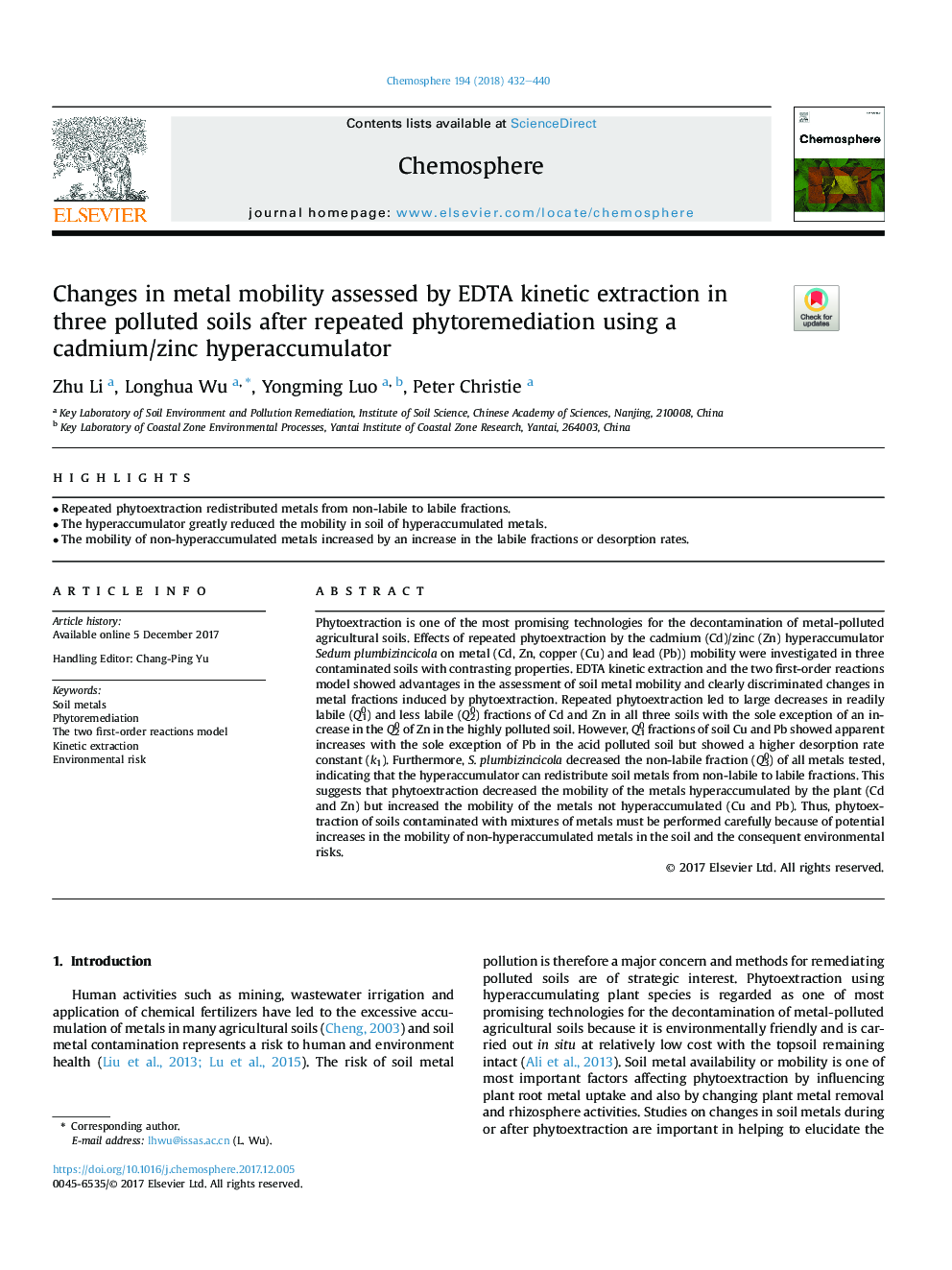| Article ID | Journal | Published Year | Pages | File Type |
|---|---|---|---|---|
| 8852482 | Chemosphere | 2018 | 9 Pages |
Abstract
Phytoextraction is one of the most promising technologies for the decontamination of metal-polluted agricultural soils. Effects of repeated phytoextraction by the cadmium (Cd)/zinc (Zn) hyperaccumulator Sedum plumbizincicola on metal (Cd, Zn, copper (Cu) and lead (Pb)) mobility were investigated in three contaminated soils with contrasting properties. EDTA kinetic extraction and the two first-order reactions model showed advantages in the assessment of soil metal mobility and clearly discriminated changes in metal fractions induced by phytoextraction. Repeated phytoextraction led to large decreases in readily labile (Q10) and less labile (Q20) fractions of Cd and Zn in all three soils with the sole exception of an increase in the Q20 of Zn in the highly polluted soil. However, Q10 fractions of soil Cu and Pb showed apparent increases with the sole exception of Pb in the acid polluted soil but showed a higher desorption rate constant (k1). Furthermore, S. plumbizincicola decreased the non-labile fraction (Q30) of all metals tested, indicating that the hyperaccumulator can redistribute soil metals from non-labile to labile fractions. This suggests that phytoextraction decreased the mobility of the metals hyperaccumulated by the plant (Cd and Zn) but increased the mobility of the metals not hyperaccumulated (Cu and Pb). Thus, phytoextraction of soils contaminated with mixtures of metals must be performed carefully because of potential increases in the mobility of non-hyperaccumulated metals in the soil and the consequent environmental risks.
Keywords
Related Topics
Life Sciences
Environmental Science
Environmental Chemistry
Authors
Zhu Li, Longhua Wu, Yongming Luo, Peter Christie,
